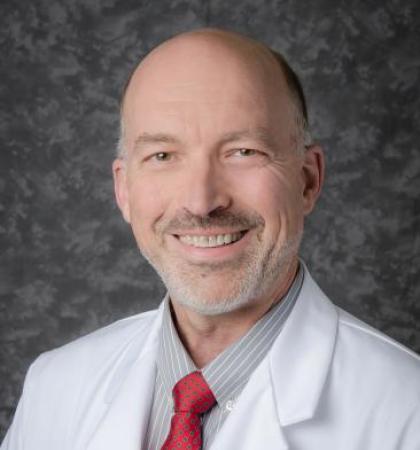
History of the Coleman Lab
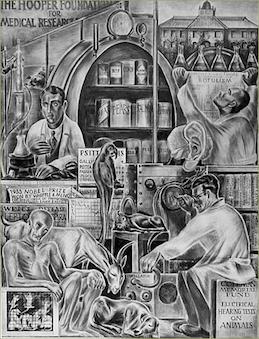
In 1938, artist Bernard Zakheim painted a series of murals in Toland Hall depicting the history of medicine in California. The depicted section of the large mural includes a reference to the Coleman Memorial Fund (lower right).
Edward Coleman died childless in 1913. John Coleman, ten of whose children survived him, died in 1919. One of his sons, George Edward Coleman, was a graduate of the University of California. George Edward then trained at the Pasteur Institute in Paris before returning to UC to work with the Hooper Foundation. Enthusiastic about the successful work of the Hooper Foundation the contribution its staff was making in the fields of health and medicine, Coleman looked for an appropriate outlet for his personal research contribution. George Edward convinced his nine brothers and sisters to participate in the creation of a Foundation that endowed a research laboratory established for them by the University of California Board of Regents. The John C. and Edward Coleman Memorial Laboratory memorialized the benefactors’ father and their uncle. When the Otolaryngology Laboratory moved to its present quarters in the Health Science East tower in 1966, it was officially named the Coleman Memorial Laboratory. It was one of the first endowed research laboratories in the world dedicated to research and education on hearing and deafness.
Representatives of the Coleman family have served continuously as Directors and Trustees of this Foundation, which was supported hundreds of research projects on hearing and deafness and has contributed to the training of several hundred clinicians and scientists in this field from 1921 up to the present.
Overview
Over the past three decades, the Coleman Memorial Laboratory has focused its research initiatives on the search for the physiological and anatomical principles of brain organization that are the bases for how hearing sensation is established, transformed and learned. From those principles, a series of ground-breaking treatments for hearing loss and related neurological disorders of language, cognition, and movement control have been developed. The laboratory continues to pioneer novel techniques to explore the causes and central nervous consequences of hearing loss and to restoring hearing in deafness. It has also broadened the scope of projects to include the development of perceptual training strategies designed to overcome impairments in hearing, in communication, in cognitive abilities, and in fluent motor control of speech and body movement in children with language impairments, in dyslexic children, in autistic syndrome children, in aging populations with and without significant hearing loss, in aphasic and other hearing- and communication-related stroke patients, and in patients with acquired motor deficits, such as spasmodic dysphonia, surgically-induced aphonia, or more general focal dystonias.
Over the last quarter-century epoch, scientists of the Coleman Memorial Laboratory have published more than 500 scientific papers, and have been awarded the rights to more than 50 U.S. and many international patents. Members of its research team have received numerous prizes and honors. Nearly a half million hearing-, language- and reading impaired children and adults have benefited from new hearing substitution devices and neuroscience-based remedial training strategies developed in our laboratories. New strategies now in development for improving the listening and cognitive abilities of hearing aid users and of aging individuals shall almost certainly be applied to millions of other individuals in great need of help. The practical inventions that have come from this group already represent two of the top 20 sets of inventions now licensed by the entire University of California system. Three new companies (Advanced Bionics, Sylmar CA; Scientific Learning Corporation, Oakland, CA; Posit Science Corporation, San Francisco, CA) have been established on the basis of these inventions. The Department’s group of dedicated scientists is recognized nationally and internationally as leaders in their research and academic medicine subdiscipline. Collaborative associations link our scientists with scientists and clinicians in top research groups at research institutions in Germany, Great Britain, Japan, China, Chile and Finland, and with scientists at Stanford, UC Berkeley, UC Davis, UC San Diego, and MIT.
Our main objective for research development in UCSF Otolaryngology – Head and Neck Surgery is to further elaborate, and to insure the continuity of this powerful basic research and translational research capability, addressing additional areas of human communication that have long been neglected, while sustaining a continuing, sharp focus on driving research findings from the laboratory out into the world to help people in need.
Current Research
By combining physiological, neuroanatomical, and computational approaches we attempt to provide a better understanding of the cortical processing of complex sounds with the. long-term goals to develop behavioral and technological rehabilitation strategies to compensate or correct for the consequences of peripheral hearing loss as well as to optimize design and implementation of auditory prostheses in the profoundly deaf patient.
Michael M. Merzenich, PhD, addresses in his research a wide range of issues surrounding questions of the consequences of maturation and aging on the ability of auditory cortex to process speech sounds. Among the questions that are currently addressed are:
How does expectation bias cortical representations of sequent (syntactic) acoustic inputs? By what mechanisms does sensory feedback bias cortical representations of expected sound sequences?
How is closure of the maturational critical period regulated in the auditory/aural speech cortex?
How does temporal processing of acoustic inputs change as we age?
How can we quickly reverse abnormal cortical processing that arises as a function of impoverished language exposure or from inherited sources of high noise in early infancy, by behavioral training applied in older children and in adults?
What are the contributions of different neuromodulatory systems - such as serotonin, dopamine and neuroadrenaline – in the regulation of cortical plasticity and in models of autism and other brain dysfunctions?
Steven Cheung, MD, focuses some of his scientific efforts on translational research, such as complex medical decision making using conjoint analysis tools applied to acoustic tumor treatment outcomes. Clinically oriented research goals include developing methods for tinnitus suppression and brain imaging analysis of auditory processing deficits in subjects with altered voicing. His basic research efforts are directed at recordings from auditory cortex in animals with altered vocal apparatuses, and consequences for auditory cortex organization for subjects with peripheral hearing losses.
Christoph Schreiner, PhD, MD, focuses his research on the understanding of the functional organization of central auditory stations of the mammalian brain (mainly the thalaus and auditory cortex) for the encoding of complex auditory signals – such as speech and communication signals – in normal and hearing-impaired models. He approaches this topic by using electrophysiology of single neurons in the context of broader topographic organizations and combines this with studies of the neuroanatomy of central auditory stations. The encoding of complex sounds in the central auditory system of mammals assesses the effects of speaker-dependent signal categorization. The goal is to determine where and how an acoustic-based sound representation is transformed into a speaker-independent, object-based representation of the auditory environment. The lamina-specific functional organization of auditory cortex of behaviorally relevant aspects (e.g. frequency resolution, discrimination of vowel-like signals) is studied in awake, behaving animals and in models of linear-nonlinear receptive fields. The nature of information transmission and transformation is explored within and between different functional modules in auditory cortex. Intracellular investigations of cortical receptive field generation and plasticity with whole-cell recordings have revealed fundamental insights into the construction of cortical receptive fields and the mechanisms that regulate their plasticity. The goal is to dissect the cellular and network contributions to functional organization and plasticity in the developing and adult animal.
Collaborators
- Craig Atencio, PhD
- Ralph Beitel, PhD
- Patrick Hullett, BS
- Andrew Saxe, BS
- Bryan Seyboldt, BS
- Magnus Teschner, MD
- Sungchil Yang, PhD
Meet our Team
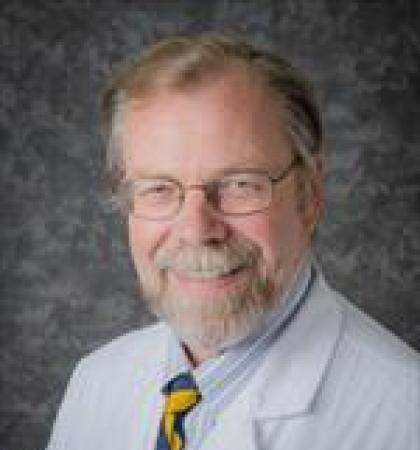
Christoph Schreiner, MD, PhD
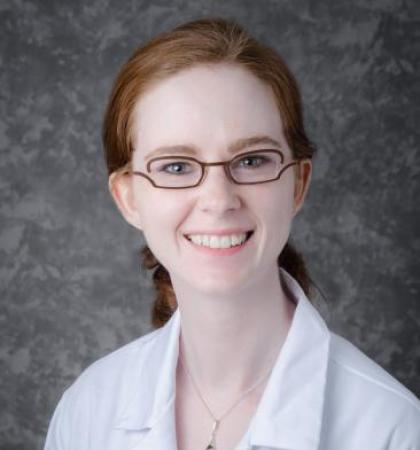
Andrea Hasenstaub, PhD
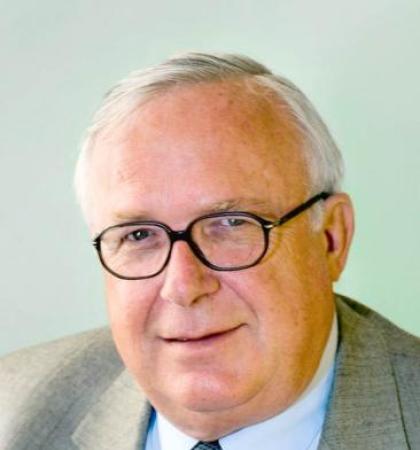
Michael Merzenich, PhD
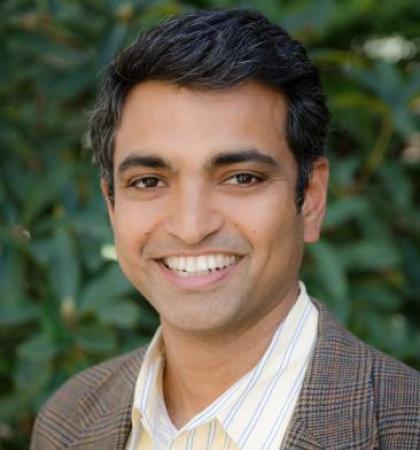
Srikantan Nagarajan, PhD
